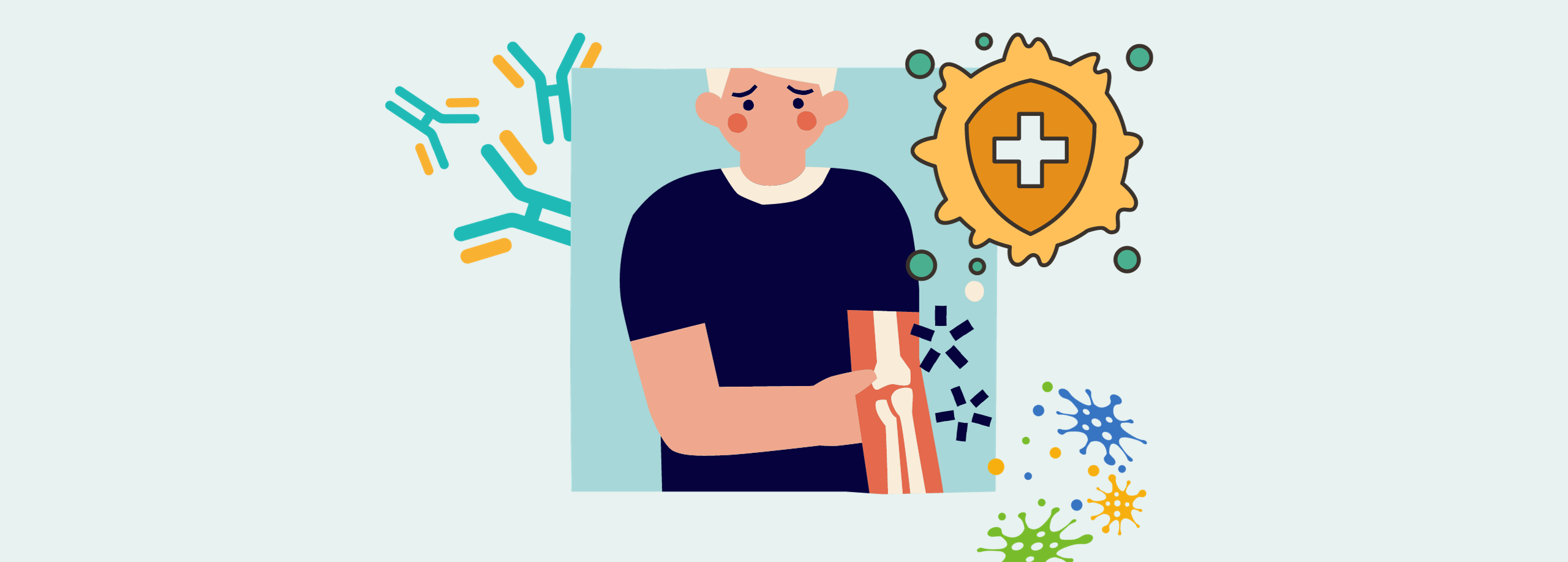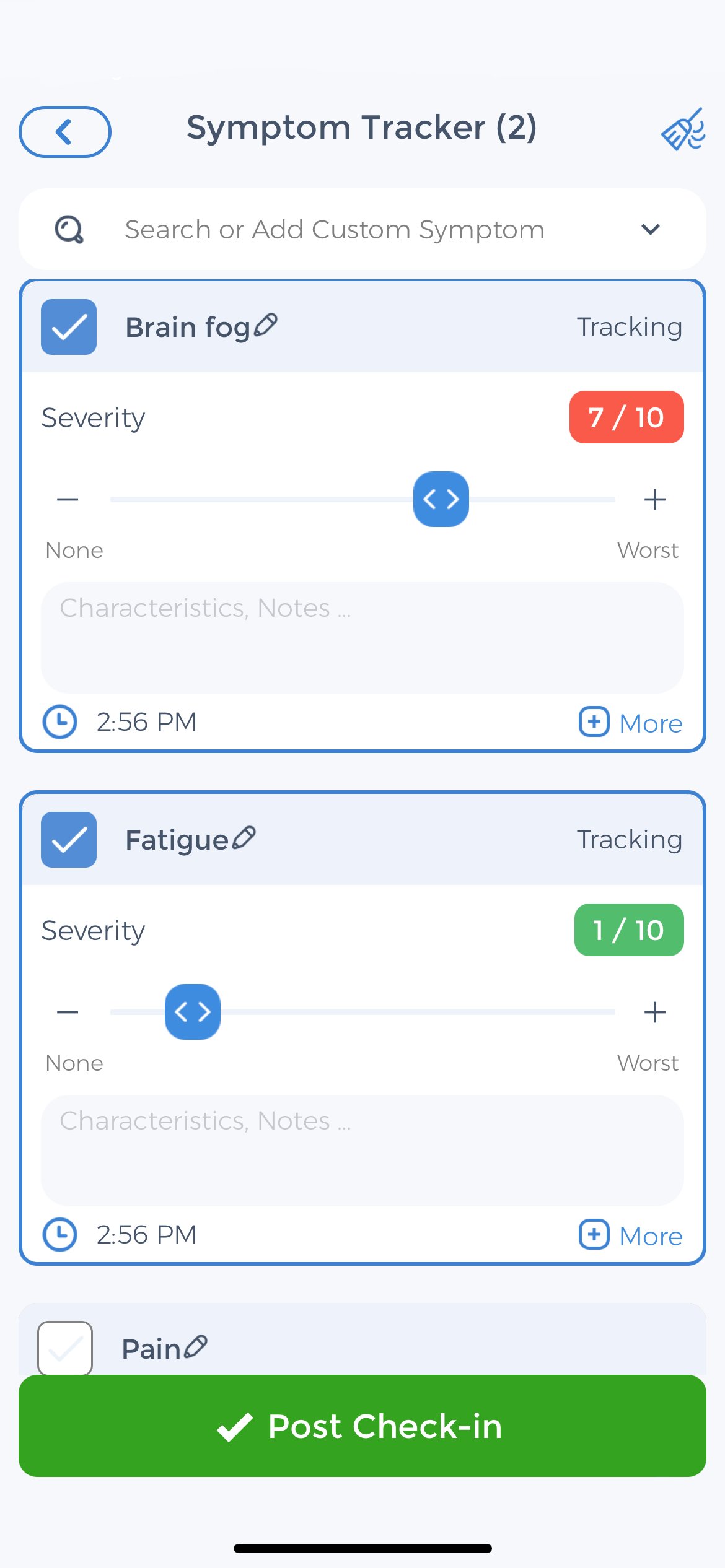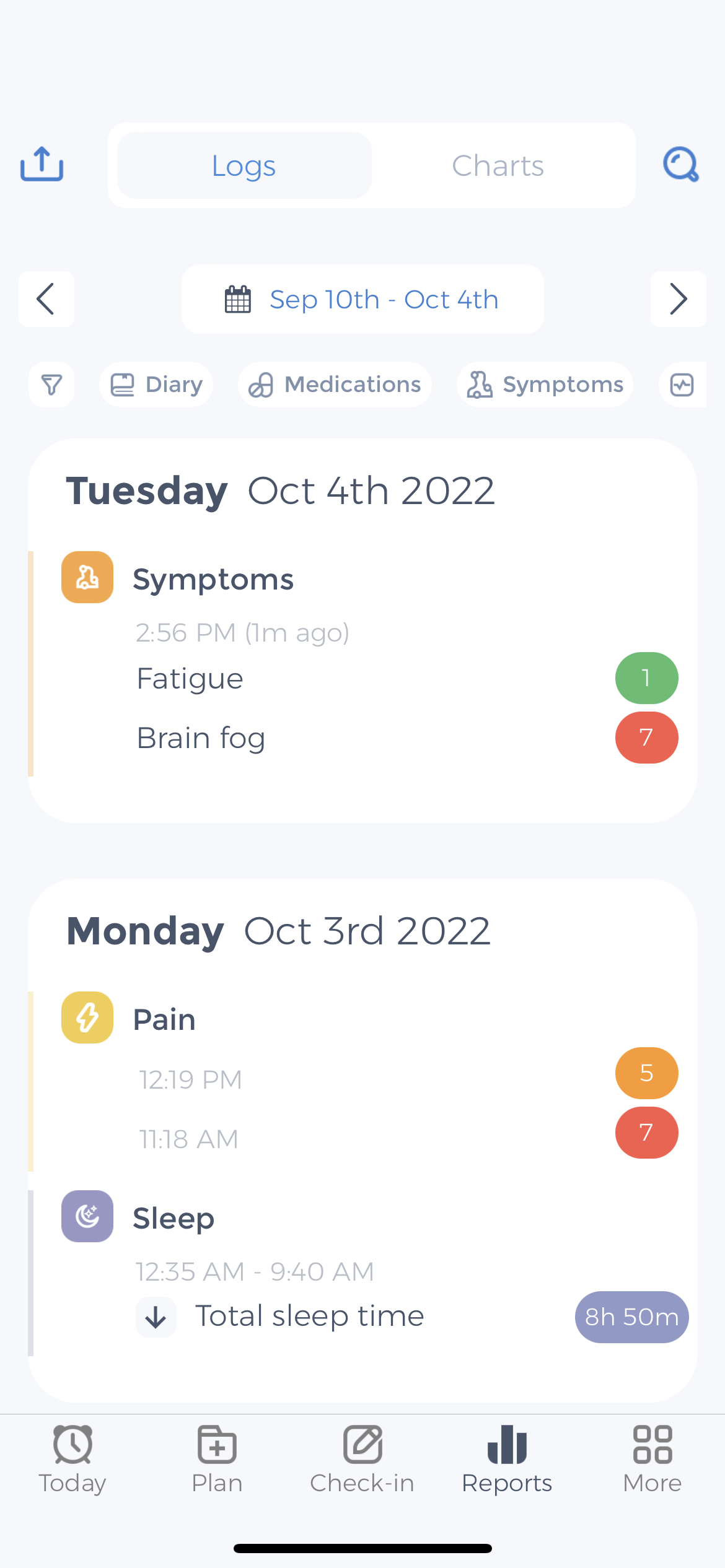
Sjögren’s syndrome is a chronic autoimmune disease where the body’s immune system attacks its own exocrine glands—those responsible for producing tears and saliva. While it most commonly affects middle-aged women, people of all ages and genders can be impacted. There is no known cure, but various treatments can help manage symptoms. Importantly, Sjögren’s can also affect the nervous system, joints, lungs, and kidneys. Sometimes symptoms can flare up suddenly—this is referred to as a Sjögren’s flare. Read on to learn how to manage these flare-ups effectively.
h2,h3 { display: inline-block; }
Table of Contents
- How rare is Sjögren’s?
- Symptoms of Sjögren’s Syndrome
- What is a Sjögren’s flare?
- What causes Sjögren’s flares?
- What does a Sjögren’s flare feel like?
- How long does a Sjögren’s flare last?
- How to manage Sjögren’s symptoms
- What are the long-term complications of Sjögren’s syndrome?
- How does the CareClinic app help manage Sjögren’s syndrome?
- Are there any specific foods that can trigger a flare?
- Prednisone brain fog
- What should I do during a Sjögren’s flare?
- Sjögren flare-up awareness comes with experience
How rare is Sjögren’s?
Estimating how many people are affected by Sjögren’s syndrome is difficult. The disease is often misdiagnosed or undiagnosed entirely. Its autoimmune nature means symptoms vary widely and may appear mild or unrelated. Estimates suggest 1 to 4 million people in the U.S. have Sjögren’s, though the true number is likely higher. Global prevalence is unknown but believed to be relatively rare.[5][6]
Symptoms of Sjögren’s Syndrome
The most common symptoms include dryness in the eyes, mouth, and vagina. Other symptoms may include:
- Dry, burning eyes
- Eye pain or blurred vision
- Sensation of something in the eye
- Cracked or swollen lips
- Dry mouth or difficulty swallowing
- Tooth decay
- Vaginal dryness or urinary issues
- Fatigue
- Muscle and joint pain
- Skin rashes or dry skin
The condition can also affect:
- Digestive system—acid reflux, nausea, diarrhea
- Lungs—interstitial lung disease, pulmonary fibrosis
- Nervous system—anxiety, depression, concentration issues
- Kidneys—chronic inflammation or damage
- Blood vessels—inflammation or clotting issues
- Liver—autoimmune hepatitis, primary biliary cirrhosis
- Other organs—pancreas, brain, and more
What is a Sjögren’s flare?
A Sjögren’s flare-up is a temporary worsening of symptoms. Triggers can include stress, infections, medications, or other environmental or hormonal changes. Flare symptoms vary but usually intensify existing issues.
What causes Sjögren’s flares?
There’s no single cause, but several triggers have been identified:
- Infections: Both viral and bacterial
- Medications: Some corticosteroids and antimalarials
- Stress: Emotional and physical stressors
- Other factors: Weather changes, pregnancy, menopause
What does a Sjögren’s flare feel like?
Symptoms vary per person. You might feel unusually fatigued or experience increased dryness in the eyes, mouth, or vagina. Brain fog, mood changes, and even lung or kidney symptoms may arise if the flare is severe.
How long does a Sjögren’s flare last?
Duration varies. Flares can last from a few days to several months, depending on severity and management.
How to manage Sjögren’s symptoms

There’s no universal treatment, but these approaches help:
- Get adequate rest
- Stay hydrated
- Avoid known triggers
- Use artificial tears for eye relief
- Use mouthwash for oral dryness
- Use vaginal lubricants
- Take OTC meds like ibuprofen for pain/inflammation
How to manage Sjögren-related constipation
Increase fiber intake, drink fluids, exercise, and use OTC laxatives if needed.
How do Sjögren’s flares affect pregnancy?
Hormonal changes during pregnancy may reduce gland secretions, worsening dryness. Regular medical follow-up is essential.
What are the long-term complications of Sjögren’s syndrome?
Potential complications include:
- Dental: Cavities, gum disease, mouth sores
- Vision: Corneal damage, vision loss
- Vaginal: Infections, painful intercourse
- Kidneys: Chronic inflammation, damage
- Lungs: Inflammation, breathing difficulties
- Autoimmune overlap: Increased risk of lupus or rheumatoid arthritis
How does the CareClinic app help manage Sjögren’s syndrome?

CareClinic helps you track symptoms, meds, and appointments. You can:
- Set medication reminders
- Log severity, frequency, and duration of symptoms
- Discover flare triggers by analyzing historical data
- Compare modalities like diet, activity, and meds to symptom changes
Discover correlations between symptoms and medications
You can identify patterns—e.g., frequent UTIs after taking Prednisone—suggesting a need for preventive care. Remember: correlation ≠ causation.
Reporting back to your doctor
Use the logs screen for quick filtering. Easily show when and how often you took meds, along with symptom changes or flare durations.
Are there any specific foods that can trigger a flare?
There’s no universally triggering food, but spicy foods, caffeine, and alcohol may worsen symptoms for some. Track dietary impact using our food symptom diary.
Prednisone brain fog
Prednisone, often used for autoimmune conditions, can cause mood swings, insomnia, and brain fog. Combat this by sleeping well, exercising, and eating clean. Consider B-12 supplements. You can also log drugs like methotrexate, azathioprine, or doxycycline in CareClinic to track compliance.
What should I do during a Sjögren’s flare?
Rest, use artificial tears or oral lubricants, hydrate, and avoid alcohol. Try sugar-free gum or candy for dry mouth. Use OTC pain relievers and apply heat or cold as needed. Try a humidifier if sleep is affected. Seek medical help for severe flares.
Lean on friends, family, or support groups. You’re not in this alone.
Why autoimmune symptom trackers are recommended by doctors
Trackers help you:
- Identify symptom patterns
- Communicate effectively with doctors
- Track med side effects
- Identify triggers
- Analyze health correlations
- Gain deeper insight into your condition
CareClinic remains the most downloaded autoimmune tracker globally.
Sjögren flare-up awareness comes with experience
You’ll learn your body’s patterns. Don’t get discouraged—management is possible. Use CareClinic to stay ahead. Track symptoms, understand triggers, avoid flare-ups, and keep your care team informed.
Rest. Log. Analyze. Repeat.
References
- “Medications for Sjogren’s Syndrome | NYU Langone Health”. https://nyulangone.org/conditions/sjogrens-syndrome/treatments/medications-for-sjogren-s-syndrome
- “”. https://www.nhs.uk/conditions/sjogrens-syndrome/
- “Survival Tips | Sjögren’s Foundation”. https://sjogrens.org/living-with-sjogrens/survival-tips
- “What causes flare-ups in Sjogren’s? – Hosh Yoga”. https://www.hoshyoga.org/what-causes-flare-ups-in-sjogrens/
- “Sjogren’s Is Common | sjogrensadvocate”. https://www.sjogrensadvocate.com/sjogrens-is-common
- “The epidemiology of Sjögren’s syndrome – PMC”. https://pmc.ncbi.nlm.nih.gov/articles/PMC4122257/
- “Sjogren’s Disease Symptoms – Dry Mouth & Eyes | NIAMS”. https://www.careers.niams.nih.gov/health-topics/sjogrens-disease
- “Sjögren’s Syndrome Symptoms | Johns Hopkins Medicine”. https://www.hopkinsmedicine.org/health/conditions-and-diseases/sjogrens-syndrome/sjogrens-syndrome-symptoms
- “Symptoms | Sjögren’s Foundation”. https://sjogrens.org/understanding-sjogrens/symptoms
- “Symptoms of Sjögren’s Syndrome”. https://www.nationaljewish.org/conditions/sjogrens-syndrome-ss/symptoms


